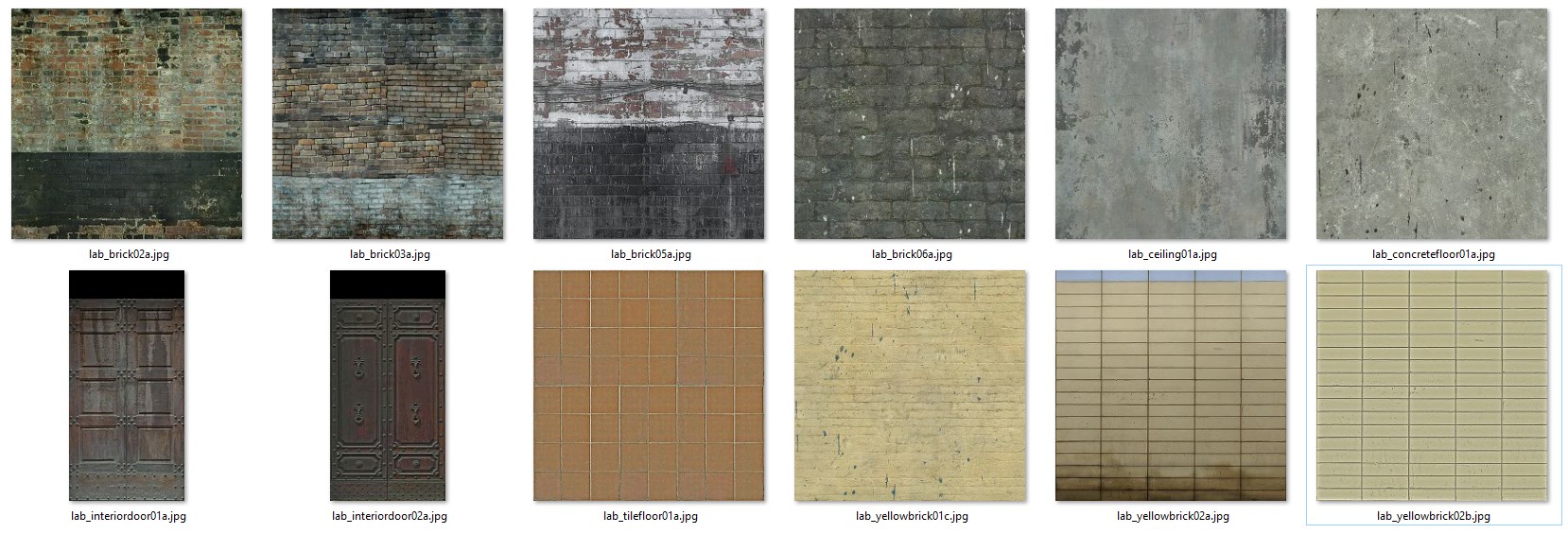Let's Speculate! Half-Life 2 WADs
This is somewhat of a disclaimer I must put forward here. I have a habit of finding little things, and then theorising about them for a considerable amount of time to people (much to their annoyance, I’m sure), but never actually sharing it or writing it down. I have a website specifically for this now, might as well use it. That said, some of my thoughts or ideas are very likely wrong, but I’d like to put forward some interesting thoughts and theories for people to consider. Don’t take my words and consider them a fact. Don’t take them and publish them as fact.
Anyway consider this the start of a new series!
Recently, after many years, I’ve been looking through the Half-Life 2 leak once again and I had a few realisations or thoughts about things I previously didn’t think much of. Today we’ll be looking at a random document mixed in with the materials called “oldtrans.txt”.
I have to start by saying I knew this existed before but never actually took the time to look at it. Looking at it again today, from initial appearances, it seems that it’s a list of texture names before they were, one can assume, renamed which are then, usually, followed by a path that likely points to where each texture was moved to and renamed as. After looking through the document a little more, I then stumbled upon a few names I recognised from Half-Life WADs; “aaatrigger”, “origin” and “clip”. Immediately it seems likely this is a list of names that were used for textures, before Valve transitioned to it’s VMT (Valve Material Type) and VTF (Valve Texture Format) implementation, and were using WADs instead.
So Source probably used WADs for storing textures earlier in development, big deal! We knew this was probably the case already! Hammer even has support for converting WADs to VMFs too, isn’t that more than enough to suggest this?
Well, this is very true. However, this information seems to suggest that initially Half-Life 2 had more of a focused texture-set, as the textures original names seem to imply more specific functions or areas in which they were to be used. An example could be a number of textures here that have the naming convention, “deep”. These were very likely intended for the Citadel, the mentioning of “core” in some of their names seems to suggests this, as the Core within the Citadel was originally to be featured in Half-Life 2, before being recycled as a concept in Episode One, and there’s no other “core” within the Half-Life 2 design that I’m aware of.
The creation of specific sets of textures, for chapters or uses, was something that had previously been done for games such as Doom, Quake, Unreal and Half-Life, so it’s interesting to see that initially Half-Life 2’s texture set was being produced in a similar way. It seems for the final game, very few textures remained that were intended to be used exclusively in certain areas and the majority of them became, in some sense, generic. That said, tags within materials are still used as a recommendation and Valve still mixes around their texture palette to make chapters appear more varied and unique from the last.
It’s rather peculiar however, as I’ve never seen any VMFs within the leak reference WAD textures, but only textures with specific paths. From what I recall, the earliest VMF in the leak is from 2001, it’d be interesting to see if the textures in this document (their renamed counterparts anyway), matchup with textures that we can still see in those earliest levels. However, the implication of this could mean that this document and the textures it references are actually older than the earliest VMFs we have, I have to emphasize to people that the modification dates for files within the leak are not accurate in most cases.
It appears that a number of textures mentioned in this document however, are also missing from the leak. A few examples are “brickwall026c” and “brickwall026b”, which are mentioned in the document but otherwise missing. It’s also interesting to note that a lot of textures were repurposed as something else, “lab_brick06a” became “stonefloor001a” for example.
I decided to put a collection of these together, which you can see below, to see what sort of textures they originally intended to use for the lab. I’ve seen these textures used in some iterations of the VMFs and some of them remain for the final version of Kleiners Lab, though I don’t believe I’ve seen “lab_yellowbrick02a” and “lab_yellowbrick02b” used in any VMFs I’ve seen. It’s also very much possible that these textures looked differently when they were originally created, and for some of these sets there are a number of additions that aren’t mentioned in the document, which might imply that Valve were still actively creating new textures at the time.
That’s all I’ve got for the moment but I hope this was insightful. Keep in mind, again, that this is speculation and I could be entirely wrong about what I’m saying, the point is for you to take this information in and hopefully correct me so a complete picture can be formed for everyone else.
If you enjoyed this, I’ll definitely pursue it again in the future. Thanks for reading!
Update
Thanks to Jackathan, on Reddit, for correcting me in regards to my assumption on “deep” being the Citadel. Deep is a name that Valve used to refer to Kraken Base, which can also be seen used for levels intended for that particular chapter of the earlier storyline.
He also added that the earliest VMF that was leaked is actually from 2000, which was a port of c1a3a from Half-Life.

